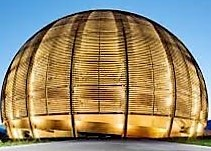Speaker
Description
Heavy-ion storage rings connected to radioactive beam facilities offer a unique environment for nuclear physics experiments. However, so far they have been only coupled to in-flight fragmentation facilities, for example the ESR and the CRYRING at GSI Darmstadt/ Germany, the CSR at HIRF in Lanzhou/ China, and the Rare RI Ring at RIKEN Nishina Center in Japan.
Neutron capture reactions play a crucial role for the understanding of the synthesis of elements heavier than iron in stars and stellar explosions via the slow (s), intermediate (i), and rapid (r) neutron capture processes. Whereas most of the s-process neutron captures occur on stable or long-lived nuclei along the line of stability and have been experimentally constrained in the past decades, measuring directly the neutron capture cross sections of short-lived nuclides (T1/2 << 1 y) has been so far out of reach and lead to large deviations between various Hauser-Feshbach predictions for very neutron-rich nuclei.
Recently, a new method to couple a neutron-producing "facility" to a RIB storage ring was outlined [1]. The initial proposal involved a storage ring running through a high flux fission reactor to achieve high enough neutron densities. Later, a facility with a spallation neutron source was suggested [2], a proposal that is presently investigated at Los Alamos National Laboratory [3].
Our storage ring project at TRIUMF proposes to use instead a compact neutron generator coupled to a low-energy storage ring (E= 0.1-10 MeV/u) and the existing ISAC radioactive beam facility. The project is currently seeking funding in Canada for a feasibility study. The TRISR project is presented, and measurements are outlined that would become possible, especially with the availability of clean, intense radioisotope beams from the new ARIEL facility.
If this world-wide unique facility is funded and built, it could become a key player and lead within a decade of operation to a major reduction of uncertainties for neutron capture cross sections of radioactive nuclei.
[1] R. Reifarth and Y. Litvinov, Phys. Rev. ST Accel. Beams 17 (2014) 014701.
[2] R. Reifarth et al., Phys. Rev. Accel. Beams 20 (2017) 044701.
[3] S. Mosby et al., Los Alamos National Laboratory preprint LA-UR-21-30261 (2021).
